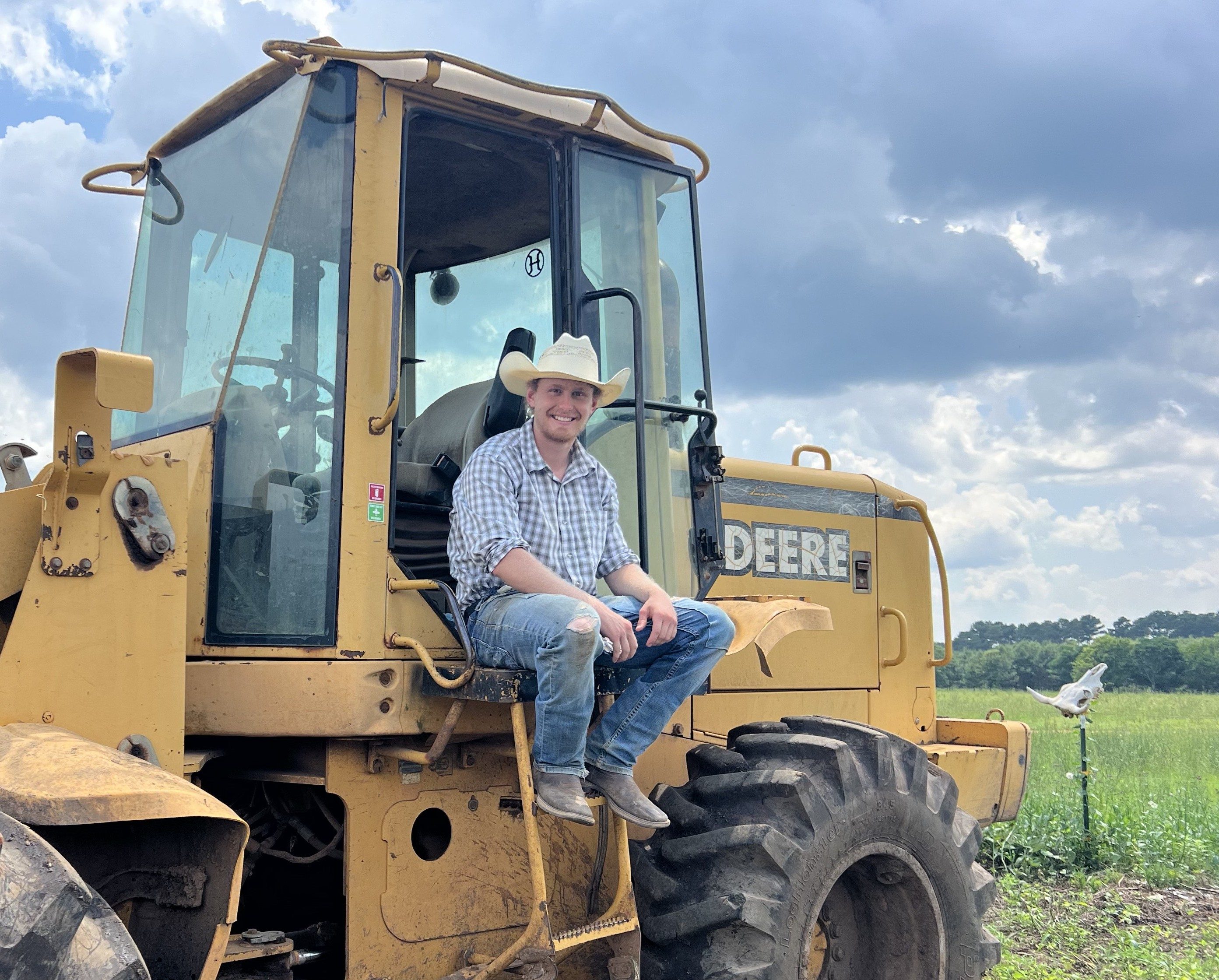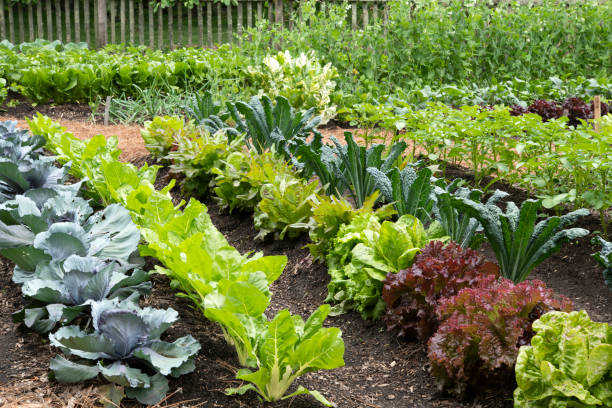TheFarmersDigest
The Farmers Digest
May 30, 2025

Editor
Chris Pigge

Editor
Miles Falk
Gardening for Beginners Part 1.5: Growing and Enjoying Your Garden

When it comes time to get plants in the ground, keep the process simple. For transplants (young plants from the garden center), dig a hole slightly larger than the container the plant comes in. Gently remove the plant from its container, place it in the hole at the same depth it was growing before, fill in around it with soil, and pat gently. Finish with a thorough watering to help soil settle around the roots.
For seeds, follow the depth guidelines on the seed packet. A general rule is to plant seeds about as deep as they are large—tiny lettuce seeds need just a light covering of soil, while bean seeds can go down about an inch. Keep the soil consistently moist until you see sprouts emerging. Once seedlings have a few true leaves, you may need to thin them if they're crowded, simply by snipping extra seedlings at soil level with scissors.
Don't worry about perfectly straight rows or precise spacing. In nature, plants don't grow in tidy rows, and your garden doesn't need military precision to be productive. As long as plants have enough room to grow without excessive crowding, they'll be fine.
Watering Without Worry
Watering might be the aspect of gardening that causes beginners the most anxiety. Too little water and plants wilt; too much and they can develop root problems. But this doesn't need to be complicated.
The simplest approach is to let the soil be your guide. According to research from the University of California Cooperative Extension, sticking your finger in the soil about an inch deep provides a reliable test. If it feels dry at that depth, it's time to water thoroughly. If it's still damp, check again tomorrow. This finger test works for both containers and garden beds.
Containers typically need water more often than garden beds—sometimes daily in hot weather. The larger the container, the less frequently you'll need to water. Location matters too; containers in windy spots or full sun dry out faster than those in more protected areas.
When you do water, aim for the soil rather than the leaves when possible. Wet leaves can sometimes encourage certain plant diseases, especially if they stay wet overnight. Studies from Cornell University recommend morning as generally the best time to water, but realistically, watering when you remember is better than not watering at all.
How much should you water? Enough to thoroughly dampen the root zone. For most small gardens, this means watering until the soil is moist several inches down. Brief, shallow watering encourages shallow roots, while thorough, less frequent watering encourages deeper roots that help plants better withstand dry spells.
Simple Garden Maintenance
The beauty of a small beginning garden is that it requires minimal maintenance. Checking your garden daily takes just a minute or two. Look to see if anything needs water, if anything is ready to harvest, or if there are any obvious problems like wilting or pest damage.
On a weekly basis, perhaps spend 15-20 minutes pulling any obvious weeds, harvesting what's ready, and checking under leaves for pests. Most problems in small gardens can be solved by either adding water or removing problematic bugs by hand.
Adding a layer of mulch around your plants makes maintenance even easier. According to the National Gardening Association, mulch can be as simple as dried grass clippings, straw, or even a layer of newspaper covered with a thin layer of soil. This covering suppresses weeds and helps soil retain moisture, reducing both your weeding and watering chores.
Harvesting for Continued Production
Many beginners wait too long to harvest, not realizing that regular harvesting actually encourages plants to produce more. For most vegetables, earlier is better. Leafy greens like lettuce can be harvested by picking outer leaves when they're just a few inches tall, leaving the center to continue growing. Beans taste best when they're slim and tender. Zucchini ideally should be picked when they're 6-8 inches long, before they get seedy and tough.
Herbs benefit tremendously from regular harvesting. Research from Purdue University Extension shows that pinching or cutting stems encourages the plant to branch out and become bushier, ultimately producing more leaves. Basil, for example, should have its growing tips pinched regularly to prevent flowering and encourage a fuller plant.
The more you harvest, the more most plants will produce. It's like telling the plant, "Hey, that was great—make more of this good stuff!" This is especially true for beans, peas, and other vegetables where we eat the fruit rather than the plant itself.
When Things Go Wrong
Even experienced gardeners face challenges and lose plants sometimes. The difference is they know it's just part of the process, not a sign of failure or a reason to give up. Here's how to handle some common beginner issues:
When something's eating your plants, first identify the culprit. For larger pests like caterpillars or tomato hornworms, simply picking them off by hand is often the most effective solution. According to Oregon State University Extension, for smaller pests like aphids, a strong spray of water can knock them off without harming the plant. As a last resort, ask at a garden center for an organic pest control option appropriate for food plants.
Yellowing leaves usually indicate either too much or too little water. Check soil moisture and adjust your watering schedule accordingly. Research from the University of Minnesota Extension reminds us that overwatering can be just as harmful as underwatering—roots need oxygen as well as moisture.
If weeds seem to be taking over, don't panic. Focus first on removing weeds immediately around your vegetable plants, as these compete directly for resources. Then add mulch to suppress future weed growth. Perfect weed control isn't necessary for a productive garden.
If you forget to water and everything wilts, all may not be lost. Give everything a good, thorough soaking, preferably in the evening so plants have overnight to recover without sun stress. Many plants bounce back surprisingly well from drought, especially if the dry spell was brief.
Getting Started Today
The most important step in gardening is simply beginning. Here's a super simple plan to get growing this weekend if you have no garden experience at all: Get a large container with drainage holes, buy a bag of potting mix and a few herb plants, plant them according to the directions above, place in a sunny spot, and water when the soil feels dry an inch down. You'll be harvesting fresh herbs all season with minimal effort.
If you're ready for a small garden plot, pick a sunny 4×4 foot spot, remove all the grass and weeds until you have bare dirt, then use a shovel to thoroughly loosen and fluff up the soil until it looks like you've completely disturbed the area with no remaining clumps. Mix in some compost if you can, get a few vegetable transplants from a garden center, plant them with enough space between (follow the recommendations on the plant tags), water well, and check daily.
Gardening isn't about perfection—it's about learning as you go. Plants want to grow. Your job is mostly to provide the basics (sun, soil, water) and then get out of their way. Each season teaches you something new, and next year's garden will be even better.
So grab some soil, plants, and a watering can—and join the millions of people who've discovered the simple joy of growing something delicious. Your garden is waiting, and it doesn't care if you're a complete novice. In fact, that makes the eventual harvest all the more satisfying.
References
Cornell University Cooperative Extension. (2023). Watering Guidelines for Home Gardens.
National Gardening Association. (2023). Using Mulch in Your Garden.
Oregon State University Extension. (2022). Natural Pest Control Methods.
Oregon State University Extension. (2022). Biological Pest Control.
Purdue University Extension. (2022). Growing Culinary Herbs.
University of California Cooperative Extension. (2022). Watering Vegetables and Herbs.
University of Illinois Extension. (2023). Watering Correctly Saves Time, Money, and Plants.
University of Minnesota Extension. (2022). Water Wisely.
Weisman, G. (2021). Grow All You Can Eat in Three Square Feet. DK Publishing.